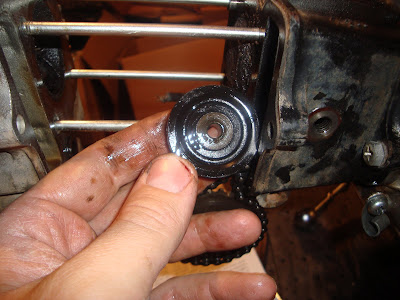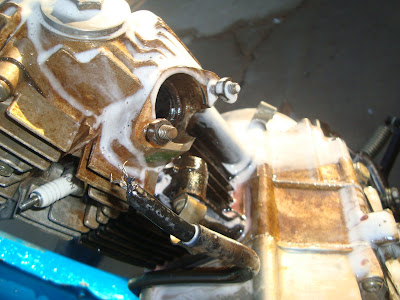Okay after a long and heated forum discussion about a Vulcan 1500 headlight that won’t come on, and several folks suggesting to bypass and rewire the whole thing. I decided to thoroughly investigate and put together a solid and thorough explanation and troubleshoot. If I am incorrect please inform me with proper terminology and logical thought. This only write-up only applies to US market 1500/1600’s, it may apply to others though.
The barebones function of the headlight turn on system is a self latching relay that (should) close the contacts when the engine begins running. The contacts (should) stay closed until the ignition key is turned off or the starter button is pressed.
I’m start with the technical explanation and go through a simpler troubleshoot further on. If you don’t understand how a
relay or diode work, then go look that up now, because there is a ton of good info on it and I don’t want to type it up.
Here’s a schematic of the 1500’s fuse box.

Item 9 is the Headlight relay.
The coil high side is feed by a yellow wire from the
alternator (outside alternator on dual alternator models) and also back fed from the load side of the relay. The back feed will give power back to the coil high side and allows the relay contacts to stay closed once they have closed. The diodes keep the alternator signal and the relay back feed signal(relay load output) separated.
The coil low side goes to load side of the Starter relay item 8. The contacts of the starter relay are normally open so normally the headlight relay low side is going out the junction box on yellow with red wire that goes to yet
another starter relay. All we need to know for the headlight discussion is that the headlight relay coil low is normally grounded, but switched to 12V+ when the starter relay contacts are closed. That should only be when the starter button is pushed.
The power side of the headlight relay comes through a ten amp fuse(Item 4) from the brown wire which is simply key on power.
The load side of the relay covers the latching as previously discussed and of course the power to the
headlight dimmer switch. The blue with yellow wire feeds the dimmer switch.
The dimmer switch feeds the power to the red with yellow for low beam or to the red with black for the high beam.
Enough of the technical stuff here’s the troubleshoot when your headlight does not come on when you fire up your bike.
Check the headlight fuse. Low fruit first.
Ohm check both sides of the bulb. It’s unlikely that the both sides have burnt out once, but again check the easy and obvious.
Fire up the motor and shut it off with the engine stop switch not the key switch.
Check the blue with yellow wire on both sides of the 9 pin connector that’s near the steering neck or possibly in the headlight bucket.
• If both sides are 12V. The dimmer switch has issues. Most likely the blue with yellow came unsoldered from the switch terminal.
• If the bike side is 12V and the switch side is not. The connection is bad.
• If there is no voltage on the bike side, then the problem with the headlight relay or blue with yellow is cut or has a bad connection.
Now back to the Fuse box.
• Check the blue with yellow wire at the fuse box. Look for a connection problem there. If it’s 12V with no headlight working, then the blue with yellow wire is broken somewhere.
• Yellow with red should be ground. If it’s not and the bike is starting okay, I think you need a new fuse box. I don’t think you can fix a broken connection between the headlight coil low side and the starter relay load.
• Now to figure other the Yellow turn one wire. You need to find all three yellow wires from the (outside) alternator. Fire up the engine and rev it to 3000 rpm. Here’s the alternator output inspection. Be sure to check the signal yellow wire at the fuse box and need the alternator to make sure there’s not a break in the wire. If it doesn’t check out, you need an alternator.

I believe I have covered the coil low side, coil high side, power side, and load side of the headlight relay. If you haven’t found the problem by now then you may need a need fuse box, because you Kawasaki does not sell the relay by itself.


























































